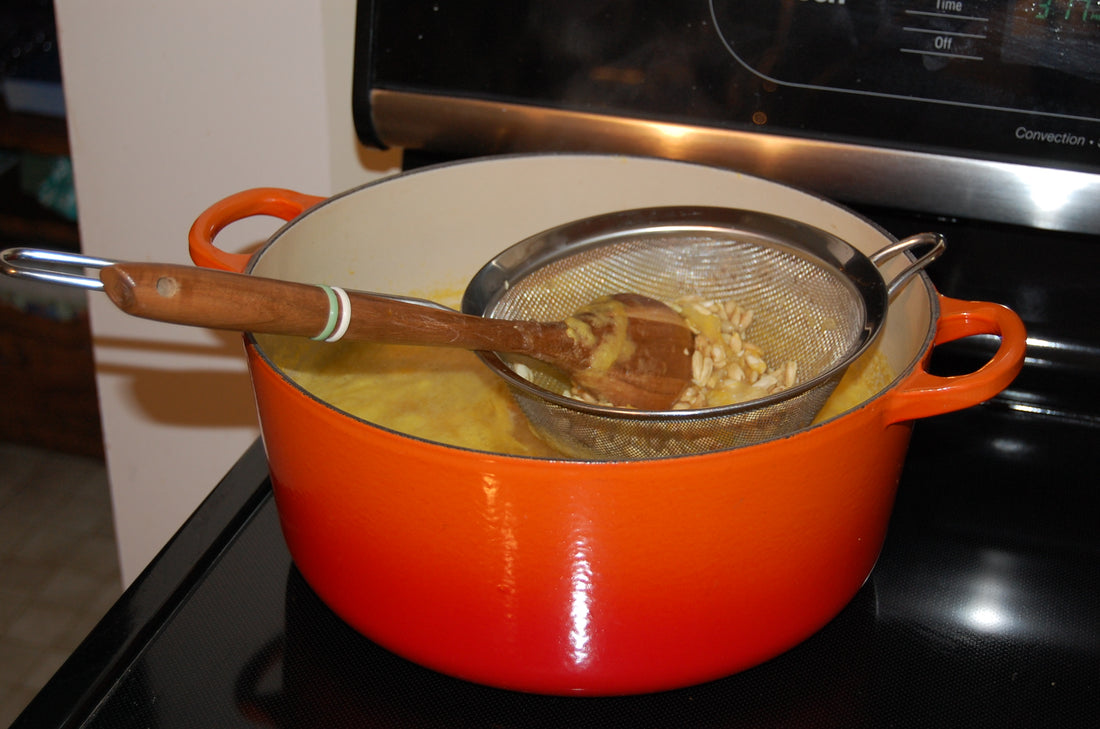Seville Oranges
Seville Oranges have recently finished up their yearly appearances in the produce aisles of stores and markets. A Seville Orange is not a looker by any means and it’s hard to conceive of anyone liking the bitter taste or the relatively pulpless and dry interior. However, cook them right and these babies bloom into a complex, bitter-sweet marmalade that is second to none.
Marmalade
Marmalade has a distinct bitter sweet taste that is relatively sophisticated. Generally, marmalade is made from citrus peel and fruit pulp which are cooked in water and sugar. Admittedly, the taste is not to everyone’s liking. Like jams, there are an infinite number of varieties. The mother of all marmalade is Seville made from oranges so bitter and sour as to be inedible unless cooked with sugar. Seville is delicious with fish, on toast, and accompanies peanut butter like they were a couple of old lovers.
Now, marmalade in general takes a long time to make – usually two days. And Seville is more complicated than the rest because of how one separates the seeds. However, it is worth every bit of the effort involved.
Mrs. Beeton’s Family Cookery and Housekeeping Book: A Useful Guide in Households, both Large and Small (1905) has four recipes for Orange Marmalade made with Seville Oranges. They are all complicated and my own recipe, given to me but a lovely ex-pat British woman is the same. I am highly amused by Mrs. Beeton because at the bottom of the first recipe she writes “NOTE: The best marmalade is made by Keiller, and many are of the opinion that when it can be bought so cheaply and good it is scarcely worth making it at home.”
For your enjoyment I have included one of her recipes.
Equal weight of fine loaf sugar and Seville oranges, to 12 oranges for one pint of water. Average cost, 6d per lb. Let there be an equal weight of loaf sugar and Seville oranges and allow the above proportion of water to every dozen oranges. Peel them carefully, remove a little of the white pith and boil the rinds in water 2 hours, changing the water three time to take off a little of the bitter taste. Break the pulp into small pieces, take out all the pips and cut the boiled rind into chips. Make syrup with the sugar and water; boil this well, skim it, and, when clear, put in the pulp and chips. Boil all together from 20 minutes to ½ hour, pour it into pots, and, when cold, cover down with bladders, or tissue-paper brushed over on both sides with the white of an egg. The juice and grated rind of 2 lemons to every dozen of oranges, added with the pulp and chips to the syrup, re a very great improvement to this marmalade.
Time: 2 hours to boil the orange-rinds; 10 minutes to boil to syrup; 20 minutes to ½ hour to boil the marmalade. If anyone can elucidate this clearly for me, please do.
As a final note, I add a splash of The Famous Grouse Scotch to the marmalade because why not? I use this particular scotch because in the Queen’s day, it was served at Buckingham Palace. If it’s good enough for her, surely it’s good enough for us.

